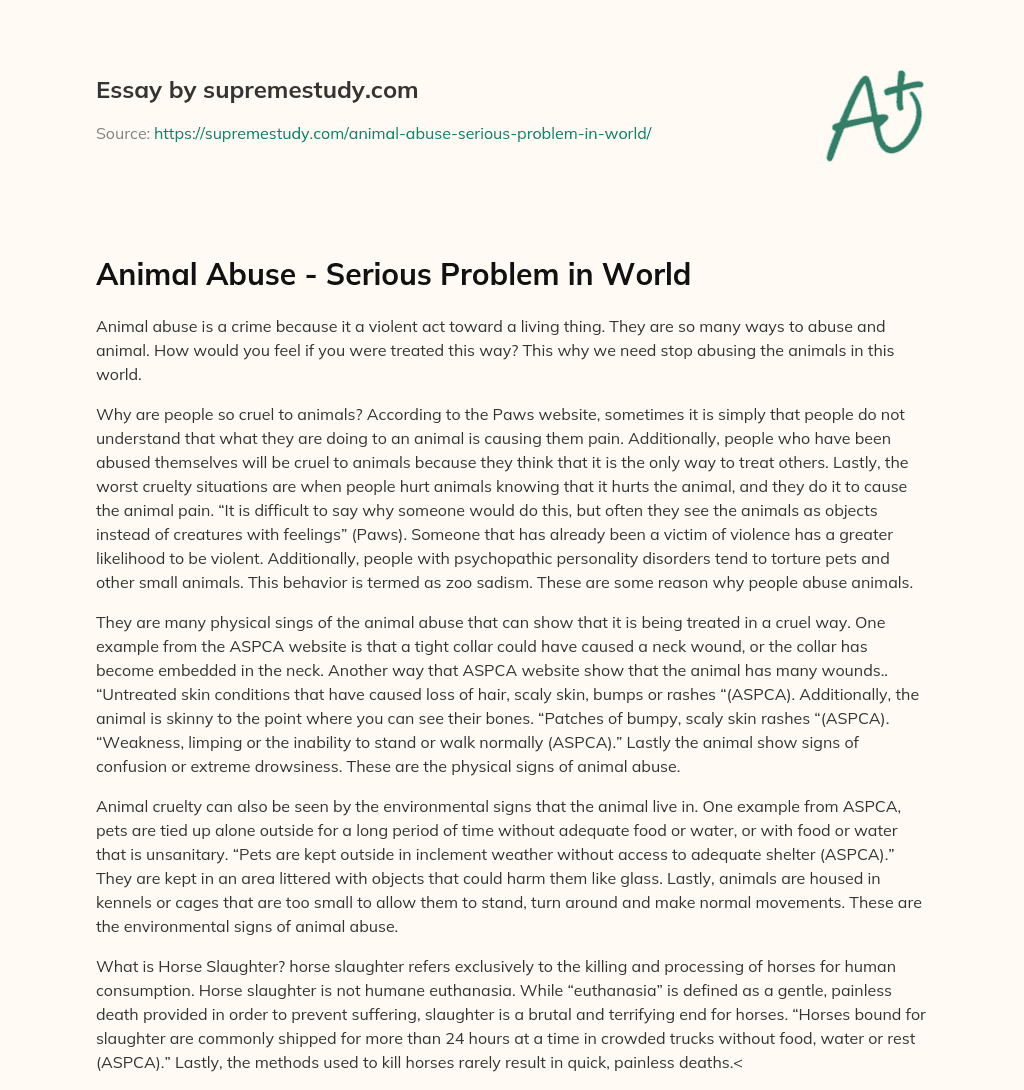Writing a compassionate essay on animal abuse requires a careful balance between factual representation and an emotional appeal that resonates with readers. Although animal cruelty is a harsh reality, focusing on the problem with empathy and clarity can catalyze change. Here is a comprehensive outline to help you craft an insightful essay that articulates the severity of the issue while fostering genuine understanding.
1. Introduction to Animal Abuse
Begin your essay by defining animal abuse. Highlight the various forms it can take, ranging from neglect and physical harm to systemic exploitation in industries like agriculture and entertainment. Establish the importance of discussing this subject, emphasizing that compassion for animals reflects the moral fiber of society. State that observing the plight of abused animals can stir a deeper contemplation about human values and ethics.
2. The Prevalence of Animal Abuse
Provide statistics and empirical evidence to illustrate the extent of animal abuse globally. Engage readers with shocking numbers that suggest an epidemic of cruelty, such as the rise in reports of neglect during economic downturns or the prevalence of puppy mills. This factual backbone is essential, as it invites readers to confront the reality of the situation head-on, nudging them toward empathy. Illustrate how even seemingly innocuous practices can contribute to broader patterns of abuse, challenging readers to reconsider their own behaviors.
3. Understanding the Reasons Behind Animal Abuse
Delve into the psychological, social, and economic factors that contribute to animal abuse. This analysis serves as a critical reflection on human behavior. Explore how societal norms, parental teachings, and economic pressures can shape one’s attitude toward animals. For example, in cultures where animals are viewed primarily as commodities, the threshold for acceptable treatment can diminish. Introduce research findings that reveal time and again a correlation between early exposure to violence and later tendencies to inflict harm on animals. This insight hints at a cyclical pattern that extends beyond individual cases to broader societal implications.
4. The Psychological and Societal Impact
Explore the ramifications of animal abuse on mental health and broader societal well-being. Document studies that illustrate how individuals who abuse animals often exhibit antisocial behaviors and may pose risks to human safety. Discuss the chilling concept known as the “slippery slope,” wherein brutality towards animals often escalates to violence against humans. Each layer of abuse sheds light on the darker corners of the human psyche, prompting readers to confront uncomfortable truths about our collective moral responsibilities.
5. Friends and Family: The Role of Community
Highlight the importance of community awareness and involvement in addressing animal abuse. Discuss how engagement from individuals, families, and local organizations can build a social fabric that discourages cruelty. Suggest that fostering a culture of compassion can help identify and report abuse, further reinforcing community bonds. Personal anecdotes of successful community campaigns and grassroots efforts can serve as powerfully motivating examples for readers, illustrating that collective action is indeed feasible.
6. The Role of Legislation
Examine the legal landscape surrounding animal rights and protections. Provide an overview of existing laws at both national and local levels, as well as gaps in legislation that allow cruelty to persist. Consider advocating for stronger enforcement of animal cruelty laws and increased penalties for abusers. Encourage readers to engage with lawmakers, demonstrating that civic responsibility also involves pushing for the ethical treatment of animals through policy change. Informative discussions about the effectiveness of such laws can underscore their importance in curbing abuse.
7. Compassion in Action: How Individuals Can Help
Encourage readers to transform their compassion into proactive efforts. List multiple ways individuals can contribute, such as volunteering at local shelters, fostering animals in need, or supporting humane education programs. Educate readers about adopting rather than shopping for pets, emphasizing the importance of responsible ownership in reducing animal suffering. Introduce the notion of ‘ethical consumerism,’ where they can consider the implications of their purchases, choosing brands that promote humane practices.
8. The Path Forward: Cultivating Change Through Education
Conclude by underscoring the significance of education in eradicating animal abuse. Advocate for increasing awareness and education at a young age, highlighting programs that teach empathy towards animals. Describe how instilling a sense of responsibility and care in children can create future generations committed to animal welfare. Emphasize that companion animals are sentient beings deserving of respect and dignity, and that understanding this concept is crucial to fostering paradigm shifts in societal outlook.
Writing a compassionate essay on animal abuse not only raises awareness but serves as a call to action. By intertwining emotional resonance with critical analysis, such essays can inspire a coalition of informed, empathetic advocates dedicated to ending animal cruelty. Through this dedication, society can hope to engender a future where the suffering of voiceless beings is neither tolerated nor ignored.






